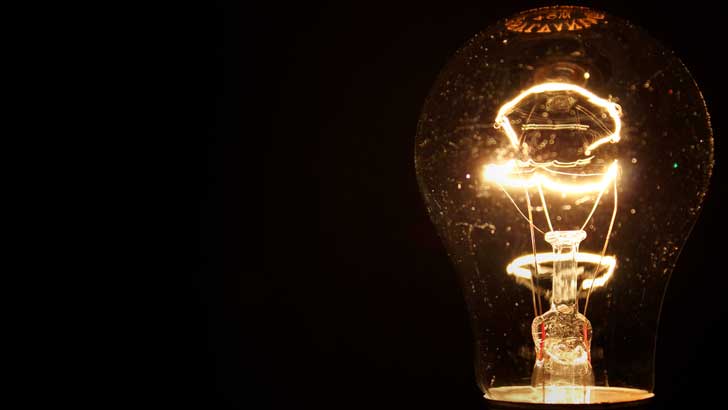When you turn your lamp on, the electricity travels from the electric company’s generator through wires into your house.

Since your lamp is plugged into an electric outlet, the electricity flows along lead-in wires to the bulb, first through the screw-in base of the bulb, around the bulb through the filament, and down into a little metal plug at the bulb’s base.
The filament is a coil of thin wire that actually produces the light. As electricity flows through this wire, it heats the filament to a temperature of more than 4500°F. This high temperature causes the filament to heat to a point where it glows. This glowing is actually the light you see.
Filaments are usually made from a metal called tungsten, for tungsten can withstand extremely high temperatures without melting.
The bulb is the glass that encloses the filament. It has three purposes.
First, it keeps air away from the filament, for air would burn up this thin wire.
Second, the bulb keeps certain gases, usually argon and nitrogen, sealed inside it. These gases increase the life of the filament.
And third, because the bulb is coated, it spreads the light from the filament evenly to the outside.
The base holds the entire unit to a lamp base and serves as its connection to the electrical power.
Thomas Edison conducted over 1,200 unsuccessful experiments before he successfully produced the modern light bulb in 1879!
